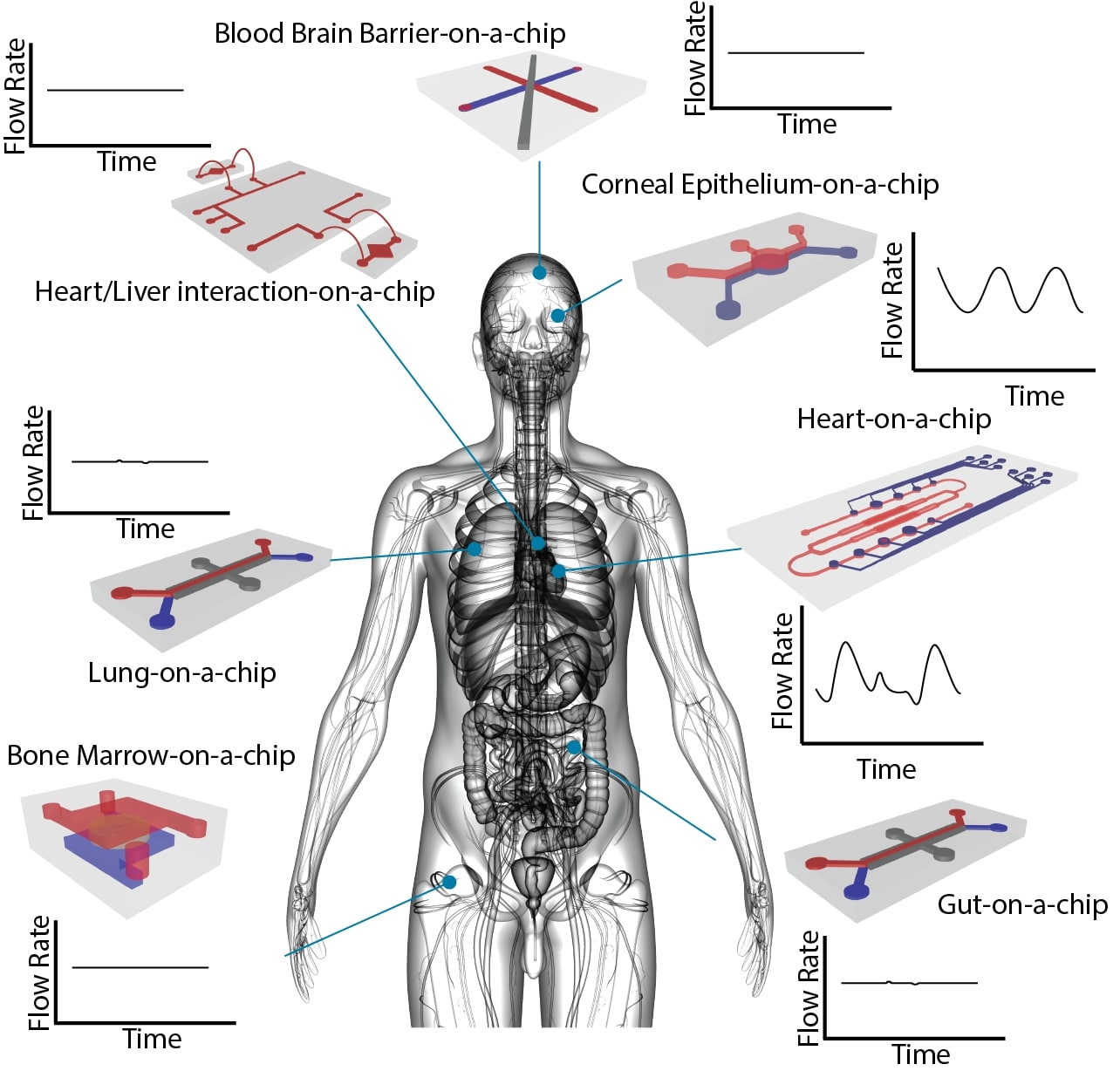A kidney-on-a-chip for investigating glomerular filtration barrier functions

The glomerulus plays a crucial role in kidney function by filtering blood through the glomerular filtration barrier (GFB). The GFB is composed of two types of cells: fenestrated glomerular endothelial cells and visceral epithelial cells, which are separated by the glomerular basement membrane. Damage to the GFB can contribute to renal diseases such as diabetic nephropathy and focal segmental glomerulosclerosis, which can cause kidney dysfunction and proteinuria. For the GFB to function as a filtration barrier, communication between the two cell types is crucial. A high-fidelity glomerular mimicking chip can help us understand this crosstalk and systematically study cell injury. The chip aims to recreate the GFB with relevant barriers and in vitro glomerulus models using primary cells from non-transplantable kidneys. The chip will be fabricated with micromachining and self-aligned electrospinning techniques to support the GFB formation with primary cells. After evaluating the biomimetic GFB chip, our team will study diabetic nephropathy by controlling glucose levels and the immune mechanism behind IgA nephropathy and test candidate drugs for rare focal segmental glomerulosclerosis. This collaboration advances our understanding of the renal dysfunction mechanisms, accelerates drug development, and leads to more personalized treatments. Combining expertise in biomimetic organ chips, nephrology, nanofiber membrane technology, and pharmacokinetics enables the development of a GFB model to investigate kidney health and new therapeutic strategies. The 1U4U initiative paves the route for funding from programs such as NSF EFRI, NIH R01, and center scale grants. This collaborative project aligns with the goals of 1U4U, including partnership development, solving complex problems with innovation and non-traditional collaboration, taking early and high-risk approaches, and promoting education through multidisciplinary partnerships.
Current Status
2024-02-14
The glomerulus plays a pivotal role in kidney function by filtering blood through the glomerular filtration barrier (GFB). This barrier comprises fenestrated glomerular endothelial cells and podocytes, which are separated by the glomerular basement membrane. Damage to the GFB can lead to renal diseases such as diabetic nephropathy and focal segmental glomerulosclerosis, resulting in kidney dysfunction and proteinuria. Effective communication between these two cell types is essential for the GFB's filtration function. A high-fidelity glomerular mimicking chip can facilitate our understanding of this intercellular crosstalk and enable systematic studies of cell injury. Our team has developed a glomerulus-on-a-chip (GOAC) model that recapitulates the GFB, investigating the effects of co-culturing glomerular endothelial cells and podocytes on the barrier's function and the phenotype of these cells. The GOAC was fabricated using soft lithography and surface chemistry techniques, featuring two parallel microfluidic channels separated by a semi-permeable membrane. We successfully cultured glomerular endothelial cells and podocytes on opposite sides of this membrane using a polydopamine-assisted collagen coating. The tissue barrier's integrity significantly changed with podocyte differentiation and the co-culture of glomerular endothelial cells with podocytes. Podocyte differentiation led to a loss of junctions and initiated the slit diaphragm generation process, causing a significant decrease in trans-endothelial electrical resistance (TEER). Interestingly, the interaction between glomerular endothelial cells and podocytes in co-culture significantly enlarged the surface area of the podocyte foot processes and enhanced the barrier function, likely due to maturation of the slit diaphragm, thus significantly increasing TEER. The chip has been further advanced with micromachining and self-aligned electrospinning techniques to better support GFB formation with primary cells. Utilizing this unique biomimetic GOAC model, our team is exploring proteinuria models to test candidate drugs for rare focal segmental glomerulosclerosis and to understand the immune mechanisms behind IgA nephropathy.
Collaborators
JUNGKYU KIM
College of Engineering
Mechanical Engineering
Project Owner
LAITH AL-RABADI
School of Medicine
Nephrology
JIYOUNG CHANG
College of Engineering
Mechanical Engineering
SHAWN OWEN
College of Pharmacy
Molecular Pharmaceutics
BRANDI WYNNE
School of Medicine
Nephrology
Project Info
Funded Project Amount$30K
Keywords
Microfabricated kidney chip, glomerular filtration barrier, fenestrated glomerular endothelial cells, podocytes, kidney dysfunctions
Project Status
Funded 2023
Poster
View poster (pdf)
